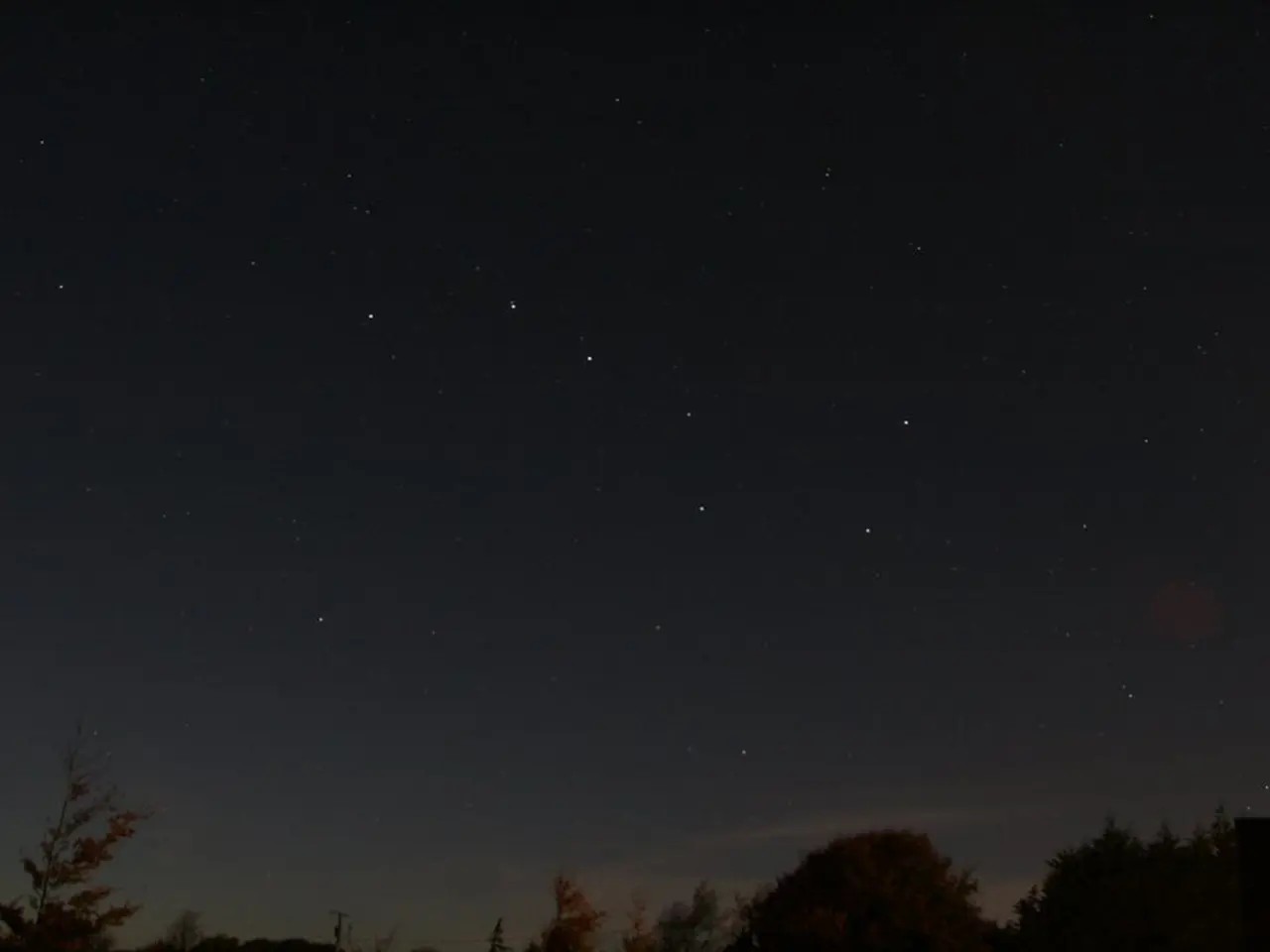Celestial Phenomenon Interpretations: Symbolism, Spiritual Beliefs, and Folklore Surrounding Shooting Stars
In the vast expanse of the night sky, a fleeting spectacle captures our imagination - the shooting star. These celestial wonders have captivated humans for millennia, with their allure intertwined with myths, superstitions, and cultural beliefs.
Shooting stars are not actual stars, but burning bits of rock and dust that shine in the sky as they accelerate towards Earth. The colours of these celestial bodies can vary, with magnesium imparting a blue-green light, iron causing a yellow appearance, sodium adding an orange-yellow light, and ionized calcium producing violet hues.
The position of a shooting star in the sky has been associated with one's luck in various cultures. A shooting star on the right is believed to indicate good fortune, while one on the left suggests misfortune. This belief is shared by many, from ancient Celts and Germanics in Europe to contemporary North American and Eurasian communities.
In many cultures, shooting stars are seen as souls on a journey. This belief can be traced back to ancient times, where stars were often believed to represent souls. In Seneca Native American culture, pointing at a meteor was thought to make the star reveal one's hiding place.
The practice of making wishes upon a falling star is believed to have its roots in the belief that they appeared when the gods opened heaven to peer at Earth. This tradition persists today, with the belief that a wish made upon a falling star will be granted wide-spread in North America and Eurasia.
Interestingly, approximately 48.5 tons of meteoric material enter Earth's atmosphere every day, resulting in numerous shooting stars. The likelihood of seeing stars falling dramatically increases during a meteor shower, such as the Leonids in November and the Perseids in August, where hundreds of meteors per hour can be seen.
Despite their captivating nature, shooting stars may not be as rare as they feel, especially barring light pollution. However, their fleeting appearance ensures they remain a source of wonder and fascination for many.
In ancient cultures, a shooting star was often considered a bad omen. Yet, in modern times, it has come to symbolise hope, dreams, and the infinite mysteries of the universe. The mystique of shooting stars continues to captivate us, reminding us of our place in the cosmos and the enduring allure of the unknown.
Read also:
- Peptide YY (PYY): Exploring its Role in Appetite Suppression, Intestinal Health, and Cognitive Links
- Toddler Health: Rotavirus Signs, Origins, and Potential Complications
- Digestive issues and heart discomfort: Root causes and associated health conditions
- House Infernos: Deadly Hazards Surpassing the Flames








